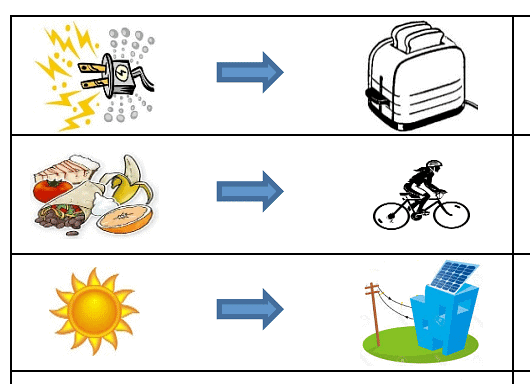Class 10 Exam > Class 10 Notes > Biology for GCSE/IGCSE > Transfer of Energy
Transfer of Energy | Biology for GCSE/IGCSE - Class 10 PDF Download
Transfer of Energy
- The Sun serves as the primary energy source for biological systems.
- Energy moves through living organisms, encompassing both light energy from the Sun and chemical energy within organisms. This energy is eventually dispersed into the environment, often as heat.
- Light energy from the Sun and chemical energy within organisms are included in the flow of energy through living systems.
- Energy is ultimately transferred to the surroundings, such as in the form of heat.

Question for Transfer of EnergyTry yourself: What serves as the primary energy source for biological systems?View Solution
The document Transfer of Energy | Biology for GCSE/IGCSE - Class 10 is a part of the Class 10 Course Biology for GCSE/IGCSE.
All you need of Class 10 at this link: Class 10
|
101 videos|193 docs|33 tests
|
FAQs on Transfer of Energy - Biology for GCSE/IGCSE - Class 10
| 1. What is the process of transfer of energy in living organisms? |  |
Ans. Transfer of energy in living organisms occurs through the consumption of food, which is broken down during digestion to release energy in the form of ATP (adenosine triphosphate). This energy is then used for various cellular processes within the organism.
| 2. How is energy transferred between trophic levels in an ecosystem? |  |
Ans. Energy is transferred between trophic levels in an ecosystem through the consumption of organisms. Producers (plants) convert sunlight into energy through photosynthesis, which is then consumed by primary consumers (herbivores), followed by secondary consumers (carnivores) and so on.
| 3. What is the role of mitochondria in the transfer of energy within cells? |  |
Ans. Mitochondria are known as the powerhouse of the cell because they are responsible for producing ATP through cellular respiration. This process converts the energy stored in food molecules into a form that can be readily used by the cell for various activities.
| 4. How does energy flow through a food chain? |  |
Ans. Energy flows through a food chain in a unidirectional manner, starting from producers at the base (plants) and moving up through various trophic levels as organisms are consumed. At each level, some energy is lost as heat, and only a portion is transferred to the next level.
| 5. What is the significance of energy transfer in ecosystems? |  |
Ans. Energy transfer in ecosystems is crucial for maintaining balance and sustainability. It ensures that organisms have the necessary energy to carry out life processes, and it also influences population dynamics and the overall health of the ecosystem.
Related Searches




















